Grapes
Powdery Mildew
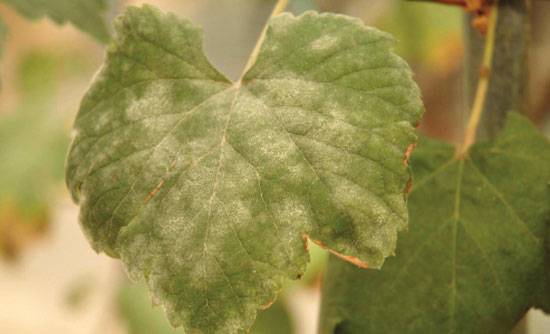
Uncinula necator
Fungal Disease
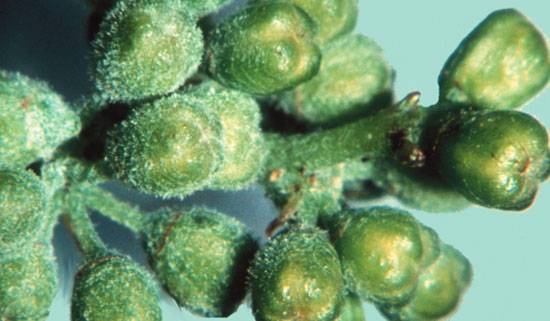
Uncinula necator
Fungal Disease

Uncinula necator
Fungal Disease
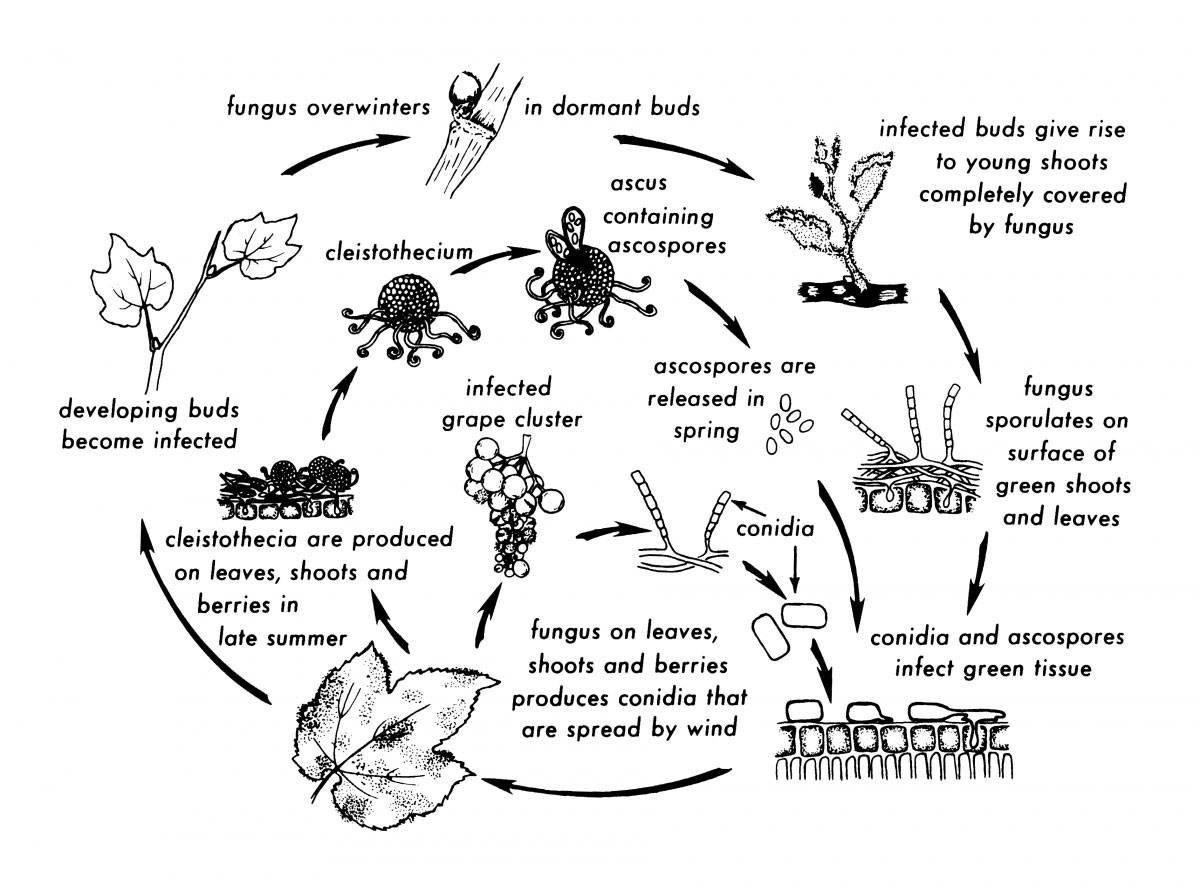
Uncinula necator
Fungal Disease
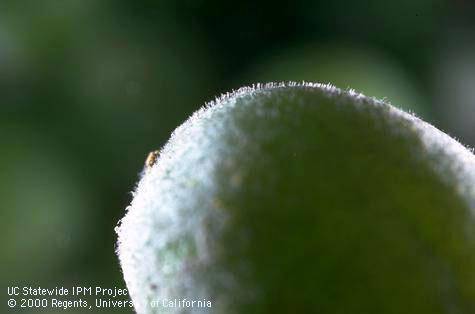
Uncinula necator
Fungal Disease

Uncinula necator
Fungal Disease
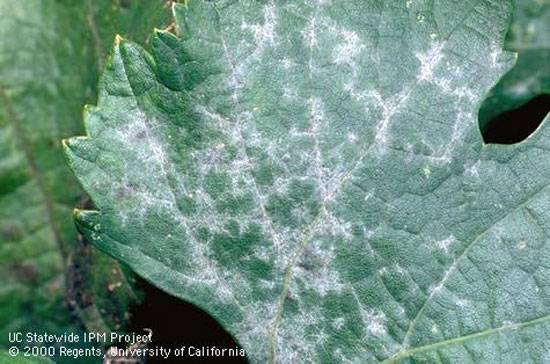
Uncinula necator
Fungal Disease
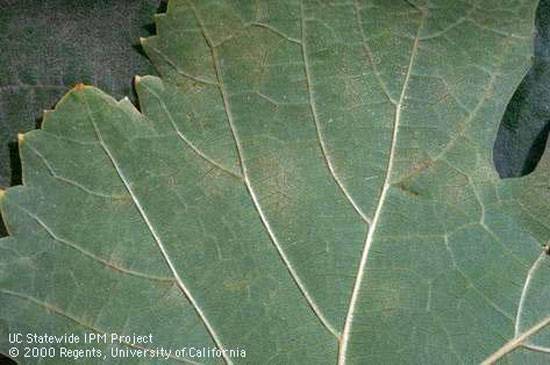
Uncinula necator
Fungal Disease
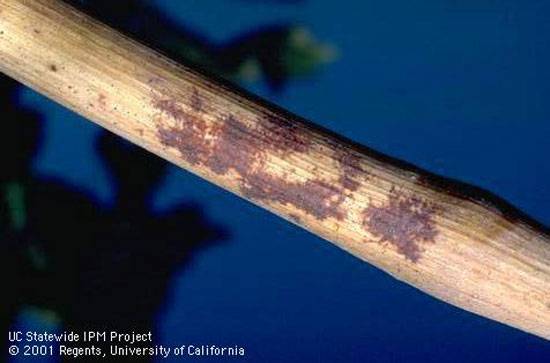
Uncinula necator
Fungal Disease
Grape powdery mildew, caused by the fungus Uncinula necator, is a common yet damaging disease that affects only grapevines and a few closely related species. It overwinters as hyphae inside dormant buds or as cleistothecia (spore-bearing structures) in the bark, canes, and debris on the vineyard floor. These structures release airborne spores (ascospores), which serve as the primary inoculum for the disease. Ascospore release is triggered by as little as 0.1 inch of rain, combined with an average temperature of 10°C. Within 4–8 hours, most mature ascospores are discharged into the air and carried by wind to infect new grapevine tissue.
Once an ascospore lands on a green surface, it germinates and causes a primary infection. The fungus then produces conidia (asexual spores) after 6–8 days, which gives the characteristic powdery or dusty appearance to infected areas. These conidia act as secondary inoculum, continuing to spread the disease throughout the growing season. Importantly, a single primary infection can result in the production of hundreds of thousands of conidia, each capable of initiating secondary infections.
Conditions for Disease Development
Powdery mildew thrives in a wide range of temperatures, from 15 to 32°C, with an optimal range of 20–25°C for infection and disease development. While conidia are inhibited by temperatures above 35°C and killed above 40°C, high humidity (40–100%) supports conidia production and germination. However, unlike most grape diseases, powdery mildew does not require free water to infect plants. In fact, free moisture, such as rainfall, is detrimental to the survival of conidia. This makes powdery mildew unique compared to other grape diseases like black rot and downy mildew, which need water for spore germination.
Low, diffuse light and dense vine canopies also favor the development of powdery mildew, as the fungus prefers shaded, humid environments with poor air circulation. Under optimal conditions, the time from infection to conidia production is about seven days, meaning the disease can progress rapidly, even in drier growing seasons when other fungal diseases are less prevalent.
Symptoms and Impact
Powdery mildew can infect all green tissues of the vine, including leaves, shoots, and fruit clusters. Early symptoms include small white or grayish patches on both the upper and lower leaf surfaces. These patches expand over time, eventually covering entire leaves with a powdery white coating. In severe infections, leaves may curl upward, especially during hot, dry weather, and young shoots may become distorted or stunted. On dormant canes, dark-brown to black patches can remain as a result of previous infections.
Blossom clusters are particularly vulnerable to powdery mildew. Affected flowers may wither and drop before setting fruit, while infected cluster stems may dry up, causing berries to drop. Berries that are infected early in their development may show fungal patches, become misshapen, or even split open. In purple or red cultivars, infected berries may fail to color properly and appear blotchy at harvest.
Late in the season, black specks (cleistothecia) often appear on infected areas, signaling the presence of the fungus’s sexual fruiting bodies. These structures help the pathogen survive winter and initiate infections the following spring.
Additionally, grape growers should always refer to the latest guidelines from APEDA (Agricultural and Processed Food Products Export Development Authority) and NRC Grapes when selecting fungicides. These guidelines ensure compliance with export requirements regarding harmful fungicide and pesticide residue levels (MRLs), which are regularly updated.
Image Source and Ref: Ohio State University Extension, UC IPM,NM State University.



